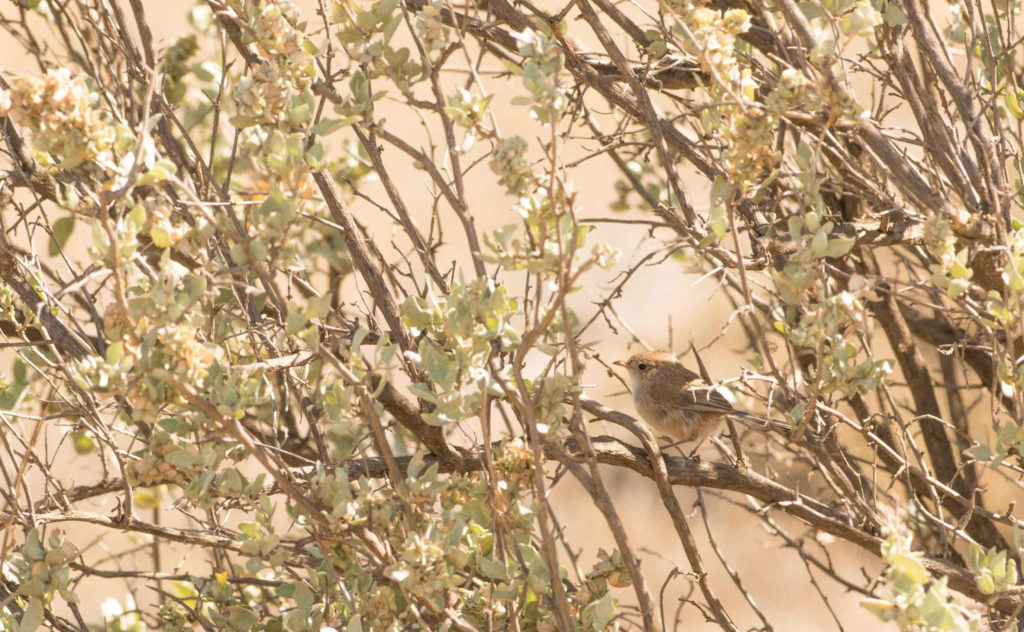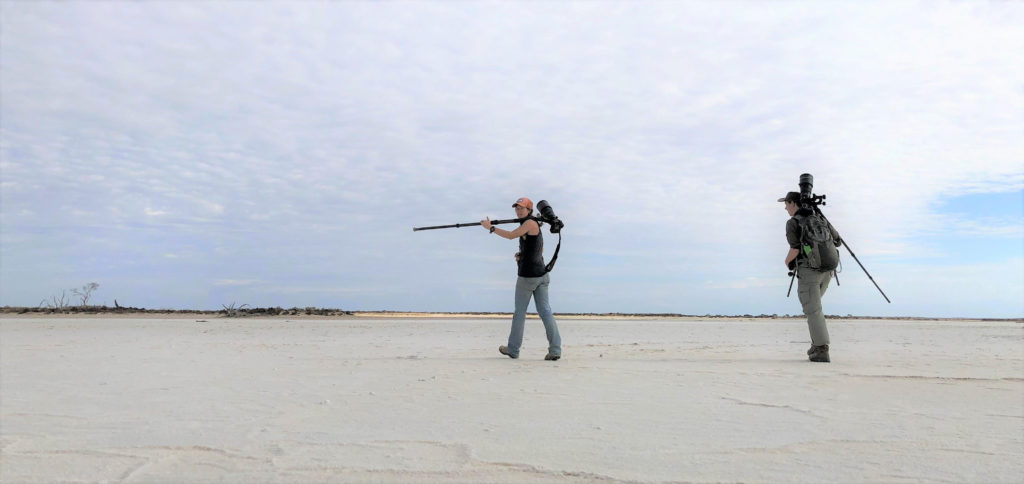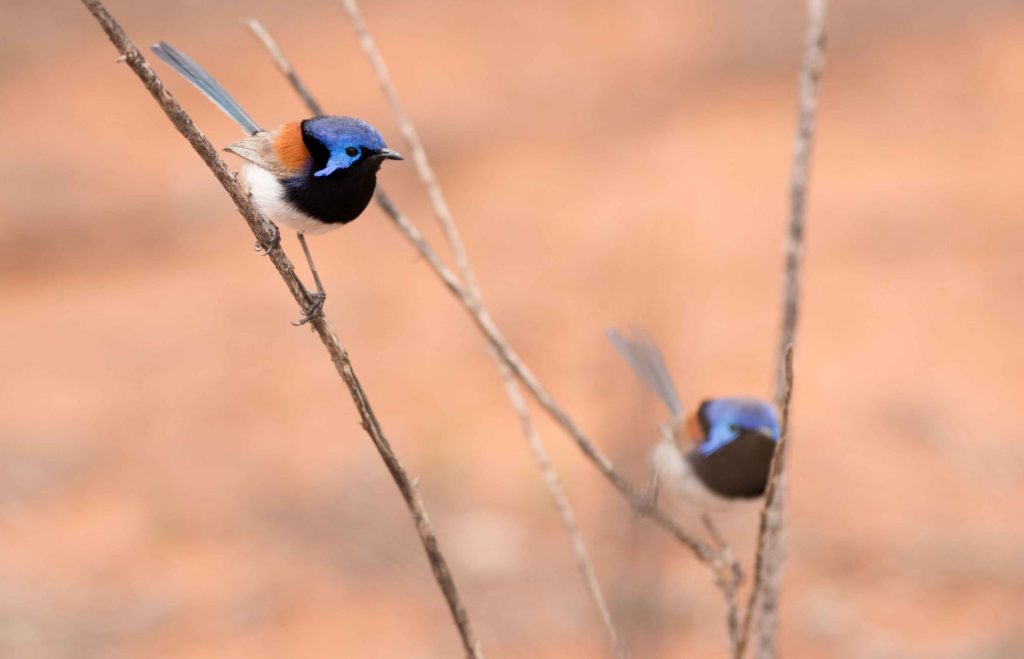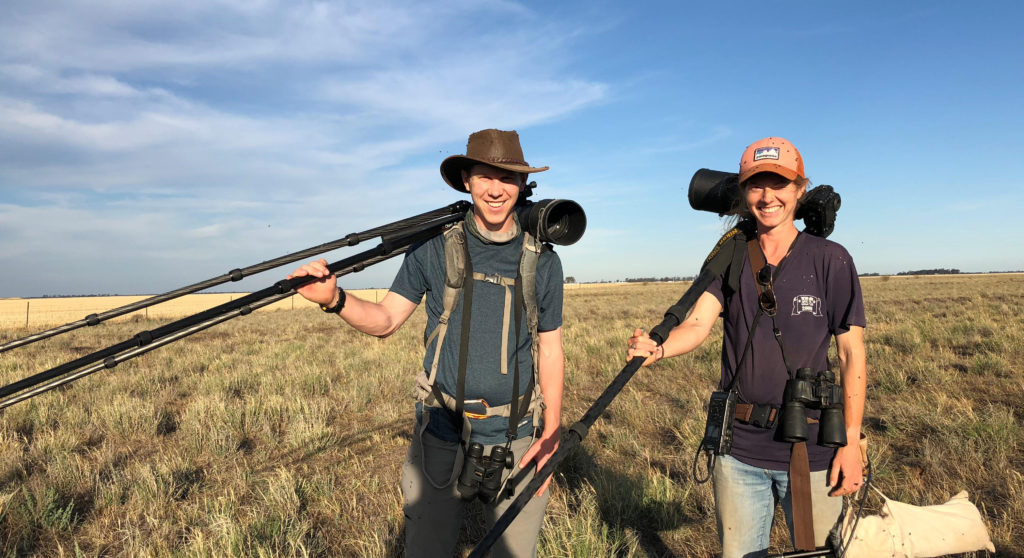Dear Fairywren Followers,
It has been 130 days since we returned from our whirlwind tour of south-eastern Australia collecting fairywren data (who’s counting?), and we finally have some data to share!
To recap, in December Joe, Ian Hoppe and I set off to add to the body of data you are helping us collect on fairywren plumage and social group size. We covered about 2500 kms starting in Bendigo National Park, VIC and ending in Broken Hill, NSW before we had to dash back to Adelaide to catch flights home to the US. We focused our efforts on observing Purple-backed and White-winged fairywrens across this latitudinal and rainfall gradient, but of course couldn’t help but see many a Superb along the way as well. In total we saw 419 individual fairywrens, and got some wonderful insights into how the environment might be impacting the biology of these species.
So what did we find?
Well...White-winged fairywrens did not exhibit much variation in the number of bright males we saw or in the sizes of their social groups at all. In hindsight, we aren’t terribly surprised by this. While the populations we observed covered a substantial rainfall gradient, the microhabitat we found them in was always quite open and arid, such as the salt flat below. So it may take even more variation in environment than we covered to impact these arid specialists!

White-winged Fairywren (dull unknown) by Allison Johnson

Allison and Joe walking through a salt flat. Image by Ian Hoppe.
Purple-backed fairywrens, on the other hand, seem to vary quite dramatically with rainfall! While our data is preliminary and represents only a quick snapshot of the populations, we think some patterns might be emerging. It seems like there may be fewer bright males at sites experiencing lower winter rainfall (sites further to the north along the transect) and that there may be more males than females in these same populations.
Our most striking result however, is for group size. We observed a strong relationship between the average group size of each site we stopped at and the winter rainfall that site experienced in 2018 — sites with low winter rainfall had the largest social groups! This is exactly what we were predicting, previous research has shown that purple-backed fairywrens who have helpers at their nest produce more offspring, so it was exciting to find larger group sizes in harsher environments.
Why might this pattern emerge? It may be beneficial to the helpers to stay in their natal territories or join someone else’s territory when their prospects for rearing young on their own are low or when their survival might be negatively impacted by dispersal (such as in an arid environment), similarly, breeders may benefit from having helpers at their nest to provision young when the habitat quality is low and insects are hard to find, lightening the parental care load they must carry themselves.

Bright male Purple-backed Fairywrens. Image by Allison Johnson.
We hope you find these results as exciting as we do! We can’t wait to start comparing your data coming in from eBird to our transect results and to start examining variation across species. As we’ve already seen from the transect, what happens in one species might not happen in another!
We are already planning our next transect trips for 2019 — this time we hope to compare group sizes and plumage types between the winter and breeding seasons. As the seasons are changing, keep the fairywrens in mind! Let us know what you are seeing! As always, let us know if you have any ideas or question. Get in touch via Facebook or email (fairywrenproject@gmail.com).
Happy birding!
Allison and Joe

